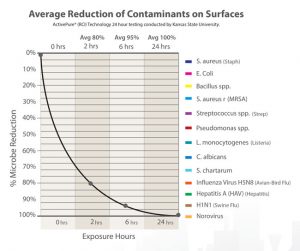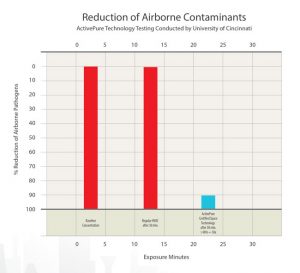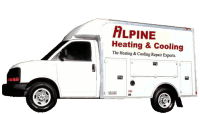
When it comes to managing home expenses, heating, ventilation, and air conditioning (HVAC) systems are significant contributors. Efficient HVAC systems not only ensure comfort but also help in reducing energy bills. For residents of Skagit County, Washington, there are several tax breaks and rebates available to make upgrading to energy-efficient HVAC systems more affordable.
Why Upgrade Your HVAC System?
Upgrading to an energy-efficient HVAC system has several benefits:
- Lower Energy Bills: Modern systems use less energy, translating into significant savings.
- Enhanced Comfort: Improved technology means better temperature regulation and air quality.
- Environmental Impact: Reduced energy consumption means a smaller carbon footprint.
- Increased Home Value: Energy-efficient homes are more attractive to potential buyers.
Five Federal HVAC Tax Credits
1. Energy-Efficient Home Improvement Credit
The federal government offers tax credits for homeowners who invest in energy-efficient improvements, including HVAC systems. As of 2024, you can claim up to 30% of the cost of a qualified HVAC installation, with a maximum credit limit set by the IRS. This credit covers the cost of the unit and installation.
How to Claim:
- Ensure the HVAC system meets the energy efficiency requirements set by the Energy Star program.
- Keep all receipts and manufacturer’s certification statements.
- File IRS Form 5695 when you do your taxes.
2. Residential Energy Efficient Property Credit
The federal government offers a tax credit for homeowners who install qualified energy-efficient property, including certain HVAC systems that use renewable energy sources. As of 2024, you can claim up to 26% of the cost of installing solar panels, solar water heaters, and other renewable energy HVAC systems.
How to Claim:
- Ensure the HVAC system meets the energy efficiency requirements set by the Energy Star program.
- Keep all receipts and manufacturer’s certification statements.
- File IRS Form 5695 when you do your taxes.
3. Nonbusiness Energy Property Credit
Homeowners can receive a tax credit for installing energy-efficient HVAC systems in their primary residences. This credit covers 10% of the cost of qualified energy-efficient improvements, including HVAC systems, up to a maximum of $500 for all years combined from 2006 to 2024.
How to Claim:
- Ensure the HVAC system meets the energy efficiency requirements set by the Energy Star program.
- Keep all receipts and manufacturer’s certification statements.
- File IRS Form 5695 when you do your taxes.
4. Geothermal Heat Pump Tax Credit
The federal government offers a tax credit for homeowners who install geothermal heat pumps. As of 2024, you can claim up to 26% of the cost of installing a geothermal heat pump, including labor costs for on-site preparation, assembly, and installation.
How to Claim:
- Ensure the geothermal heat pump meets the energy efficiency requirements set by the Energy Star program.
- Keep all receipts and manufacturer’s certification statements.
- File IRS Form 5695 when you do your taxes.
5. Small Wind Energy Property Credit
Homeowners can receive a tax credit for installing small wind energy systems, which can be used for heating or cooling purposes. As of 2024, you can claim up to 26% of the cost of installing a wind turbine system.
How to Claim:
- Ensure the wind energy system meets the energy efficiency requirements set by the Energy Star program.
- Keep all receipts and manufacturer’s certification statements.
- File IRS Form 5695 when you do your taxes.
Maximizing Savings with Puget Sound Energy Rebates for Heating

Alpine Heating & Cooling offers Air Scrubber Plus, an air and surface purification system for your home which is university proven to remove 99.9% of mold, cigarette smoke and disease-causing bacteria in your home. Air Scrubber Plus utilizes the power of UV light to sterilize the air in your home, eliminating many airborne contaminates making your home safer to live in. An earlier version of this technology was originally developed in cooperation with NASA to be used on the international space station. We here at Alpine Heating & Cooling run Air Scurbber Plus units in our shop and at our home. Contact us for an estimate for your home or office!
What is ActivePure Technology Air Purification?
Everyone is increasingly concerned about their potential exposure to allergens, mold, VOCs and air pollutants, and for good reason: allergies affect more and more people, and respiratory issues like asthma continue to be on the rise.
With ActivePure® Technology, you can go beyond traditional air purification systems by not only eliminating stale odors and reducing dust, but actually eliminating harmful contaminants* in the air and on the surfaces of your home.
ActivePure® is created in the USA, by a leading technology company with over 95 years of history and innovative products that have been recognized by the Smithsonian and trusted by millions of families. ActivePure® is the only air cleaning technology awarded the prestigious Certified Space Technology seal by the Space Foundation. We own worldwide rights to this proprietary ActivePure® Technology and it is the only Certified Space Technology that works to continuously clean and protect air and surfaces 24 hours a day.
ActivePure® is the only Certified Space Technology created in cooperation with NASA to protect the health of the astronauts on board the International Space Station.
ActivePure Technology Benefits – What Can ActivePure Technology Do for You?
- Purifies air, removes VOCs, and significantly reduces dust particles and odors without using ozone
- Reduces exposure to common bacteria and viruses and their effects upon your health and wellness
- Protects against allergy and asthma triggering contaminants and respiratory issues which may lead to health problems
- Effective against MRSA, E. coli and other illness-causing bacteria and viruses
- Reduction in sick days and the number of the common cold and flu outbreaks
- Protection from allergy and asthma triggering contaminants
- Reduction in respiratory issues
- Improved productivity from healthier, cleaner air and surfaces
- Protection from illness-causing bacteria and viruses such as MRSA, E. coli, and C. Diff
- Feel better
- Odor control
- Sleep better
Frequently Asked Questions
Q. I understand ActivePure® Technology is powerful, effectively
destroying bacteria, viruses, and pathogens, but is it safe
enough for air purification for newborn babies and pets?
A. Yes, the Air Scrubber by Aerus with ActivePure® Technology is safe
for everyone including newborn babies and pets.
Q. Could this Technology be dangerous or cause any long-term
side effects?
A. No, ActivePure® Technology is not dangerous. Our products are
specifically engineered to purify indoor living environments.
Long-term side effects of living in cleaner spaces and being
protected from exposure to harmful contaminants should
be beneficial. In fact, our customers have reported many lifechanging
benefits including improved health, productivity, and
well-being.
Q. Is it possible for indoor air to be too pure?
A. No. Based on air leakage within all homes and general daily traffic,
you cannot obtain too pure of an indoor environment.
Q. According to EPA guidelines what is a safe indoor air particle
count?
A. The particle count reading should be less than 1 μg/m³ in order to
meet EPA guidelines, which is virtually impossible to achieve outside
of a clean room. Our ActivePure® Technology will get you close.
Q. I like to open my windows when it is nice outside. What effect
will this have on the air quality in my home?
A. Open windows promote the passage of outside contaminants into
your home, compromising the level of air quality and purification
the Air Scrubber by Aerus works to create and maintain. It is
recommended to turn off the HVAC system while windows are left
open.
Q. How effective is the Air Scrubber by Aerus’ ActivePure®
Technology in larger buildings? My home is quite spacious.
Do I need more than one unit installed in various locations?
A. This unit covers up to 3,000 sq. ft. If you have separate A/C systems
operating throughout your home, each additional system will
require its own unit.
ActivePure Technology – Scientifically Proven to Work




The exterior of your home—the outer walls, ceiling, windows, and floor—is called the “envelope” or “shell.” As a knowledgeable homeowner or with the help of a skilled contractor, you can seal and insulate your home and save up to 20 percent on heating and cooling costs (or up to 10 percent on your total annual energy bill). Sealing and insulating your home envelope will also make your home more comfortable and help your heating and cooling system run more efficiently.
Seal and Insulate to Reduce Hidden Air Leaks
Be sure to look for and seal air leaks before you install insulation because it performs best when air is not moving through or around it. Many air leaks and drafts are easy to find because they are easy to feel—like those around windows and doors. But holes hidden in attics, basements, and crawlspaces are usually more significant problems. Sealing these leaks with caulk, spray foam, or weather stripping will have a significant impact on improving your comfort and reducing utility bills.
Homeowners are often concerned about sealing their house too tightly; however, this is very unlikely in many older homes. A certain amount of fresh air is needed for good indoor air quality, and there are specifications that set the minimum amount of fresh air needed for a house. If you are concerned about how tight your home is, hire Alpine Heating and Cooling, we can use diagnostic tools to measure your home’s actual air leakage. If your home is too tight, a fresh air ventilation system may be recommended.
Adding Insulation
Insulation keeps your home warm in the winter and cool in the summer. There are several common types of insulation—fiberglass (in both batt and blown forms), cellulose, rigid foam board, and spray foam. Reflective insulation (or radiant barrier) is another insulating product that can help save energy in hot, sunny climates. When correctly installed with air sealing, each type of insulation can deliver comfort and lower energy bills during the hottest and coldest times of the year.
Insulation performance is measured by R-value—its ability to resist heat flow. Higher R-values mean more insulating power. Different R-values are recommended for walls, attics, basements, and crawlspaces, depending on your area of the country. Insulation works best when air is not moving through or around it, making it very important to seal air leaks before installing insulation to ensure that you get the best performance from the insulation.
To get the most significant savings, the most accessible place to add insulation is usually in the attic. A quick way to see if you need more insulation is to look across your open attic floor. If your insulation is level with or below the attic floor joists, you probably need to add more. The recommended insulation level for most attics is R-38 (or about 12 – 15 inches, depending on the insulation type). In the coldest climates, insulating up to R-49 is recommended.
Energy Star Qualified Windows
Windows are an essential part of your home’s envelope. ENERGY STAR qualified windows feature advanced technologies such as invisible glass coatings, vacuum-sealed spaces filled with inert gas between the panes, improved framing materials, better weather stripping, and warm edge spacers, all of which reduce undesirable heat gain and loss.
Increase Savings
With more efficient frame materials windows, you can save money and use less energy. Installing ENERGY STAR qualified windows can reduce energy bills by about 7 – 24 percent compared to non-qualified windows. Your estimated savings will vary depending on current heating and cooling costs in your region.
Improve Comfort
ENERGY STAR qualified windows do more than just lower energy bills; they keep your home’s temperature consistently comfortable. During the winter, the interior glass of ENERGY STAR qualified windows stays warmer compared to typical windows, even when the temperature outside dips well below freezing. In the summer, most ENERGY STAR qualified windows reduce the heat gain into your home, without reducing the visible light.
Protect Your Valuables
Drapes, wood floors, a favorite photograph: all these things can fade or discolor after repeated exposure to direct sunlight. ENERGY STAR qualified windows have coatings that keep out the summer heat and act like sunscreen for your house, protecting your valuables from harmful, fading ultraviolet light without noticeably reducing visible light.
Look for the Energy Star
The ENERGY STAR guidelines for windows are tailored to four climate zones. For example, windows in the North are optimized to reduce heat loss in the winter, while windows in the South are optimized to reduce heat gain during the summer. For optimal results, select ENERGY STAR qualified windows that are appropriate for your climate zone.

You know the holidays are coming to Skagit Valley when the winter birds start to arrive! Time to grab those bird-watching binoculars and dig those holiday decorations out of the garage. It’s time to brighten up Skagit Valley and your home for the season.
Check out these electrical safety tips to help you avoid common electrical hazards and fires that could be sparked by holiday decorations.
LED Lights
LED lights generate less heat and last up to 20 times longer than traditional incandescent lights. Not only are they safer, but they’re far more efficient. You will pay more upfront for those LED holiday lights, but it will be worth it!
Don’t Overload
Never connect more than three strands of incandescent lights per extension cord because they could blow a fuse and increase the risk of an electrical hazard or fire. Read the manufacturer’s instructions to become familiar with how many strands are safe for LED holiday lights.
Inspect Bulbs, Plugs and Wiring
Remember to inspect decorations that have been in storage and dispose of any that have cracked or frayed wiring since these can cause electrical shocks, burns or fires. If you need to replace bulbs or fuses for your electrical decorations, be sure to unplug them first.
Use Rechargeable Battery-Operated Candles
Decorate with battery-operated candles instead of traditional wax candles, as they provide the same effect as a burning candle, but are much less dangerous. Go with rechargeable batteries to save you money in the long-run.
Beware of Flammable Objects
That cool tapestry may look really good over your lamp shade, but it’s not a good idea. Never drape anything over a lightbulb or lamp shade.
No Trips to Urgent Care!
The amount of lifting, carrying, reaching, hanging and hauling that we do when decorating may exceed what we do at other times of the year. Be mindful when lifting heavy objects or reaching to place decorations. Take frequent breaks and gently stretch hard-working muscles. Get those teenagers invovled!
Ensure Your Ladder is Stable and Secure
When hanging lights outdoors, use a wooden or fiberglass ladder instead of a metal one.
Turn Off Lights Before Bed
Before going to bed or leaving your home, remember to turn off all indoor and outdoor holiday lighting.
We hope you have a wonderful holiday season in Skagit Valley! Be sure to check out your local holiday events such as the Lighted Boat Parade in La Conner!
 Many people today may not be aware of the fact that a significant increase in a homeowner’s monthly electric bill could be directly related to a lack of adequate attic insulation. As a matter of fact, The Department of Energy recommends that homeowners increase attic insulation as one of the best ways to decrease electrical energy consumption. This makes sense simply because an abundance of insulation helps to keep heat inside your home and it avoids waste.
Many people today may not be aware of the fact that a significant increase in a homeowner’s monthly electric bill could be directly related to a lack of adequate attic insulation. As a matter of fact, The Department of Energy recommends that homeowners increase attic insulation as one of the best ways to decrease electrical energy consumption. This makes sense simply because an abundance of insulation helps to keep heat inside your home and it avoids waste.
Adequate Insulation
Simply stated, when there is sufficient attic insulation the end result is outstanding performance when it comes to preventing heat loss or transfer. When heat transfer is prevented, electric bills are lower. Even those who think they have adequate insulation may find that old insulation may not be working as it was intended. It is best to have a professional inspect your attic to determine whether or not the existing insulation is doing what it was intended to do.
Properly Installed In The Beginning
One thing that a professional technician will look at is whether or not the insulation was properly installed from the very beginning. A technician will also check for loose, broken or uneven sections of insulation as well as sections that have become settled over time. These are all conditions that can have a big impact on preventing the transfer of heat. In addition, there are circumstances where a contractor may not have used the right type of insulation with an approved R-value. Keep in mind that an R-value is the measurement of an installation’s ability to effectively prevent heat transfer.
Trusted Heating and Cooling Professional
The higher the R-value the better the insulation will be at stopping heat transfer. Regardless of what the reason is for insulation not performing the way that it should, it’s never too late to improve the insulation in your attic as a way to save money on energy. Those wishing to save up to 20% on electric bills can also do something as simple as seal insulation air leaks. Contact a trusted heating and cooling professional today to arrange an insulation inspection in order to save money over the long term. Contact Alpine Heating & Cooling today to learn more about Mount Vernon Washington heating and cooling services that get results.














